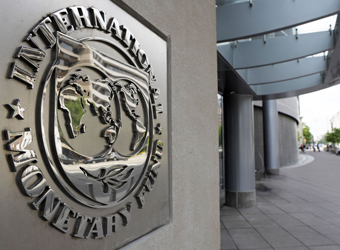Asia-Pacific’s long-term growth outlook remains the strongest in the world, but the medium-term picture is weighed down by an aging population and sluggish productivity, the International Monetary Fund warned in a new report released Tuesday.
Regional economic output is projected to hit 5.5 percent this year and 5.4 percent in 2018, well above the organisation’s global estimate of 3.5 percent in 2017 and 3.6 percent in 2018, but “to sustain long-term growth, structural reforms are needed to deal with challenges from the demographic transition and to boost productivity,” the IMF said.
A demographic hit
China, Hong Kong, Japan, South Korea, and Thailand — known as post-dividend economies, where the working-age population is shrinking in terms of its share in the total population and in absolute numbers — are seen reaching some of the highest old-age dependency ratios globally by 2050, the report explained.
And on the other side of the spectrum are early dividend nations that boast some of the youngest populations in the region, including India, Indonesia, and the Philippines.
“Overall, demographics are likely to be slightly negative for Asian growth and could subtract 0.1 of a percentage point from annual global growth over the next three decades, or 0.2 of a percentage point if early-dividend countries are unable to reap the demographic dividend,” the report said.
Aging could also add downward pressure on real interest rates and asset returns, the report added.
But labor, pension and retirement reforms can help. These include promoting the labor force participation of women and the elderly as well as minimum pension guarantees, the IMF outlined. New financial products to reduce precautionary savings and increase the availability of safe assets would also be useful, it added.
Output vs input
Asia has experienced a productivity growth slowdown since the global financial crisis, particularly in more advanced economies such as China, the IMF noted.
“Sustained improvements in welfare and living standards ultimately require productivity growth. Extensive growth, driven by capital accumulation, is possible for a while. But over long periods of time, only productivity growth, or intensive growth, can overcome decreasing returns to capital and lower investment.”
New technologies, new ways of organizing production processes, research and development (R&D) expenditure, exports, imports, and foreign direct investment (FDI) are all key drivers of productivity growth, according to the IMF.
“The main policy issue is how to raise productivity growth when external factors might not be as supportive as they were before the global financial crisis. In particular, further trade liberalization might be more difficult to achieve,” the IMF stated.
Advanced economies must focus on strengthening the effectiveness of R&D spending while developing countries should ramp up domestic investments in education and infrastructure, the organisation explained.
Source: CNBC


